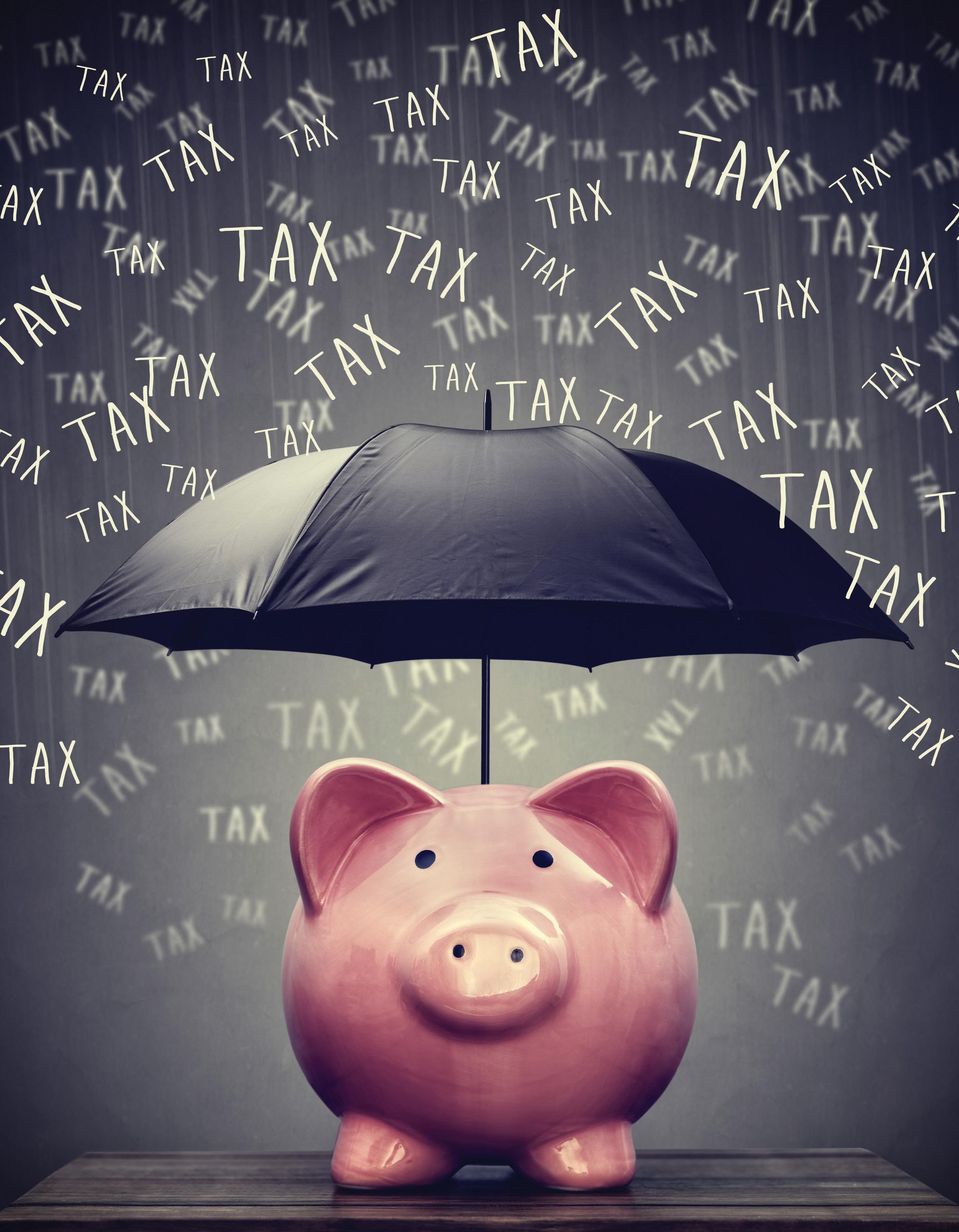
7 minute read
Bankruptcy and debt forgiveness
for businesses adversely impacted by the COVID-19 pandemic
By Robert A. Mathers, JD, CPA, ABV, PFS and


The COVID-19 pandemic is unlike anything this country has experienced in more than 100 years. Although the United States has been addressing the pandemic since early 2020, there remains substantial business uncertainty. It is difficult to predict how a state may respond to an increase in COVID-19 cases or fatalities. States have imposed varied restrictions, in some cases reflecting local political priorities. In addition, the COVID-19 pandemic accelerated certain existing trends. Big-box retail continues to deteriorate, and working remotely has become increasingly accepted for service industry professionals. The federal government responded to the COVID-19 pandemic with unparalleled financial assistance,
William D. including making available to small
Gardner, JD businesses hundreds of billions of dollars of potentially forgivable loans pursuant to the Paycheck Protection Program. Notwithstanding unprecedented federal financial assistance, as of June 30, there was a total of 3,604 chapter 11 commercial business bankruptcy filings — the highest number of such filings for the Jan. 1 – June 30 period since the same period in 2012, when there were 4,122 chapter 11 filings. 1 The unemployment rate peaked in April at 14.7%, the highest unemployment rate since World War II. By the end of June, the unemployment rate fell to 11.1%, but there were still nearly 15 million fewer jobs in June than there were in February. There are many lower middle-market companies with a viable business, but — as a consequence of the COVID-19 pandemic — they require restructuring. For many of these lower middle-market companies, there is a new restructuring tool. In February, the Small Business Reorganization Act (SBRA) became effective. SBRA makes the chapter 11 process for small business debtors shorter, less expensive and more likely to result in a confirmed plan of reorganization.
Small business debtors
Only a small business debtor may elect application of SBRA to its Chapter 11 bankruptcy case. A small business debtor may be an entity or an individual provided it meets the following qualifications: a. It engages in commercial or other business (excluding single-asset real estate debtors). b. It holds noncontingent liquidated debts of not more than $7.5 million (reduced to approximately $2.8 million after March 27, 2021). c. At least 50% of the non-contingent liquidated debt is derived from commercial or other business activities.
It is estimated that with the approximately $2.8 million threshold, about 40% of chapter 11 cases filed after Oct. 1, 2007, would have qualified for treatment under SBRA. With the higher $7.5 million threshold, it is estimated that more than 50% of chapter 11 cases from 2013 to 2017 would have qualified for treatment under SBRA.

Shorter and less expensive bankruptcy
SBRA makes the chapter 11 process shorter and less expensive. Within 60 days of a bankruptcy filing, the bankruptcy court must hold a status conference (with certain exceptions), and prior to the status conference, the debtor must file a report with the court regarding its efforts to achieve a consensual reorganization plan. Absent a court order otherwise, the debtor must file a reorganization plan within 90 days of the order for relief. Unlike a typical chapter 11 case, the debtor in a SBRA case does not need to file and seek approval of a separate disclosure statement. To further reduce costs, absent court order, there is no unsecured creditor committee, and the debtor is not required to pay U.S. Trustee fees.
Lower threshold to confirm reorganization plan
SBRA substantially improves the debtor’s ability to confirm a plan of reorganization. A SBRA case differs from a typical chapter 11 case in the following ways: a. The U.S. Trustee appoints a trustee to, among other things, facilitate the development of a consensual reorganization plan. b. Only the debtor may propose a plan of reorganization (there are no competing plans). c. The debtor may confirm a reorganization plan even if every class votes against the plan (no impaired accepting class required). In addition, SBRA eliminates the “absolute priority rule.” Notwithstanding a class of unsecured creditors voting against a reorganization plan, that reorganization plan may provide to business owners equity of the reorganized post-bankruptcy entity. The cost of these more relaxed plan confirmation requirements is that, for a three- to five-year period post-bankruptcy, the debtor

must pay an amount equal to “projected disposable income” to classes that reject the reorganization plan. In some cases, restructuring is not an option, and a business will be required to liquidate. Yet even in liquidation, there are legal traps for the unwary — including tax consequences.
Abandonment
Replaying the movie from the Great Recession of 2008, many clients will simply abandon property securing a debt. In these cases, the tax result is dependent on the debtor’s relationship to the debt: Were they personally liable or not? For business or personal use property, personal liability makes that debt “recourse debt.” Here, there are no tax consequences until the property is repossessed. Gain from the sale of abandoned property is included in gross income, whether the property was business or personal property. However, as with any capital loss, if it is attributable to a personal-use asset, it is nondeductible. Business-use assets, however, will trigger gain or loss on the disposition (again, at foreclosure). Depending on the character of the underlying property, it may be treated as either capital gain or ordinary income. On top of the capital gain or loss, if any portion of the unpaid debt is forgiven, it may be included in the debtor’s gross income as “cancellation of debt” (COD) income. This is reported separately from the capital gain or loss. Numerous Tax Court cases deal with the determination of what constitutes abandonment. Generally speaking, a debtor wanting to claim abandonment must prove three basic elements: 1. ownership of the property prior to abandonment, 2. an intent to abandon the property, and 3. affirmative action to abandon the property. For intangible assets, this may be a difficult burden of proof.
Nonrecourse debt
Normally, a debtor not personally liable for a debt is not responsible for COD income. However, there are exceptions. If a debtor abandons property securing the nonrecourse debt (such as a home secured by a mortgage), such abandonment is treated as a sale as of the date of the abandonment. For abandoned property, the amount of the gain (or loss) is determined by comparing the debtor’s adjusted basis in the property to the outstanding loan balances — and losses may be deductible. The character of the property determines the character of the loss.
Forgiveness
Generally, any forgiveness of personally guaranteed debt constitutes COD income. However, there are a number of exceptions, including the following: • gifts • some forms of government programs and certain types of agriculture indebtedness • price reductions of the underlying property • insolvency (immediately before the debt cancellation) • qualified property — including some forms of business and residential indebtedness As states permit more businesses to reopen, many will need to evaluate whether they can survive in a post-pandemic environment and, if so, whether they must restructure to remain viable. There are various liquidation and restructuring options, including bankruptcy, receivership, foreclosure and property abandonment. Understanding which option is best suited to your business needs requires an analysis of many factors, including the tax consequences.
Robert A. Mathers, JD, CPA, ABV, PFS, is a shareholder and chair of the tax section at von Briesen & Roper s.c. Contact him at 414-287-1239 or rmathers@vonbriesen.com. William D. Gardner, JD, is a shareholder with the firm’s banking and commercial finance section. Contact him at 414-287-1283 or wgardner@vonbriesen.com.
The Tax Section of von Briesen & Roper, s.c. is your resource for tax situations ranging from the traditional to the most complex including: State and Federal Voluntary Disclosures, FBAR/Foreign
Issues and State Tax Nexus Studies. Our knowledge and experience have positioned us to be your trusted solution on unique tax matters. The bottom line? We get results.









